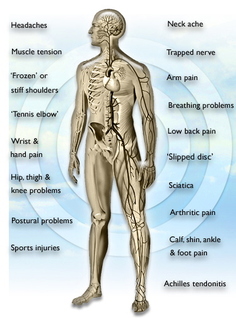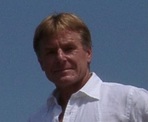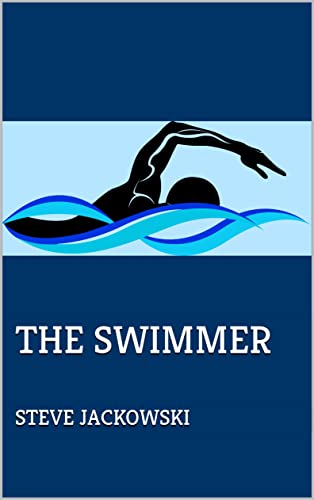
Of course sometimes my skepticism goes too far. I like to think that I'm well-read and well-informed, but the reality is, you can't know everything, no matter how hard you try. So what about the things you don't know about? Me, I try to do the research, but it's usually only after I bump into these unknowns in some way or another.
This was the case with Osteopathy. I knew Karen's son (Victor) and daughter (Sabrina) had enrolled in medical school and I knew that each of their schools specialized in Osteopathy. From my rudimentary understanding at the time, it seemed like it had something to do with manual manipulation to supplement standard medical care - something like chiropractic. But, since it didn't affect me, I didn't pay much attention.
Fast forward a couple of years. It's the day after Christmas and I'm surfing with a couple of friends on the north coast. Perfect morning, excellent uncrowded waves, good company. I climbed the cliff, drove home, and took a shower. Within an hour, I couldn't raise my right arm. The funny thing was that I couldn't remember hurting myself in the surf. Sure there were some tough duck dives and a few rail grabs, but usually I know when I've pulled something. Not this time.
It was officially a holiday and I knew my sports-med doc wouldn't be available so I went with the standard RICE treatment (Rest, Ice, Compression, and Elevation). I also loaded up on Ibuprofen. The next day it was worse, not better. I called the Doc's office and found out they were closed until after the first of the year. I called back-up sports-med docs and all were out for the rest of the year as well. All I could do was continue my RICE treatment.
At one point, I tried some stretching, but no luck. I had to eat left-handed, drive with one hand - do everything left handed - I couldn't raise my arm more than an inch or two and then, only with extreme pain.
Of course I went to the internet and quickly determined that the main area of pain was the coracoid process with radiating pain into the scapula and bicep, but I was unable to find anything that seemed to relate to my specific problem.
The following weekend, Karen and I were on a call with Karen's daughter, Sabrina (who now runs Resilience Health in Eugene, Oregon) and soon-to-be son-in-law, Steve (another Osteopath focusing on Family Medicine). I described my problem and Sabrina proposed the following: "Lie on your back. Have my Mom put the index finger of her right hand on your coracoid process and simultaneously lift your right arm into a fainting woman's position - palm outward on your forehead. Have her re-position the arm until you have minimal pain in the coracoid process. Have her hold that position for ninety seconds. Then have her return your arm to your side and rest for five or ten minutes."
We did as she asked. Ten minutes later, I sat up and raised my arm to shoulder level. After an hour, I could raise my arm over my head with zero pain. Later that afternoon, Karen and I were Salsa dancing at Salsa by the Sea and I had no recurring problems.
In between we called her back and she explained how this worked. I'm not an Osteopath, so I'll paraphrase. Basically, sometimes nerves send bad signals to the brain and the brain reinforces a problem by trying to fix it. Swelling and pain may increase and your body gets into a feedback loop. The technique she used is called Counterstrain. The pressure on the specific point and re-positioning sends a reset signal to the brain allowing the body to move on. It certainly worked for me. After a week with a paralyzed arm, this instant recovery seemed truly miraculous.
As I often do when I find something new, I went crazy doing research into Osteopathy. I discovered that Osteopathic physicians are regular physicians - they can do family medicine, psychiatry, surgery - anything an 'Allopathic' doctor can do. But, during medical school, in addition to the standard medical training, they study Osteopathy. They also are trained to do more holistic evaluation and treatment of patients, focusing on causes, not just treating symptoms. Osteopaths try to tap into the body's ability to heal itself before moving on to more aggressive treatments. Officially Osteopathy is:
a system of complementary medicine involving the treatment of medical disorders through the manipulation and massage of the skeleton and musculature.
You can recognize Osteopaths by the 'DO' after their names as opposed to an 'MD' for an Allopathic doctor.
A year and a half after that first incident, I was surfing the same spot. I pulled into a barrel which collapsed on me. I held onto my board and felt my left shoulder tear. By time I got my wetsuit off, my shoulder had swollen to the size of a grapefruit. I raced home.
Fortunately, Karen's son, Victor, an Osteopath who focuses on Neuromuscular Medicine and now runs Seek Optimal Health with his wife Lee Ann (also a gifted Osteopath specializing in Neuromuscular Medicine), was visiting. He stretched me out and started working on me. He discovered (without an MRI), a small rotator cuff tear and a misalignment. He treated me for about 45 minutes (most of it was painful), after which he explained that he had opened up passages (my word) to release the built up fluid (swelling), and had re-positioned my shoulder and upper back. He suggested I follow up with RICE and Ibuprofen for 3 days after which time I could get back in the water.
As I got up, I discovered that at least 90% of the swelling was gone as was most of the pain. I followed his advice and sure enough, 3 days later, I was back in the water.
In the years since, Osteopathy has become a regular part of my treatment for acute injuries. It has proven very effective, especially when combined with good physical therapy. Most Osteopaths suggest regular treatment to keep the body aligned and fluids flowing. I haven't gone that far yet, but I may well be on my way.
If you're like me and injure yourself from time to time, I strongly suggest consulting an Osteopath. Of course, check to see if your family doctor or Sports Medicine expert is a DO. I think you'll be pleased to find that miracles still exist in modern medicine.


 RSS Feed
RSS Feed